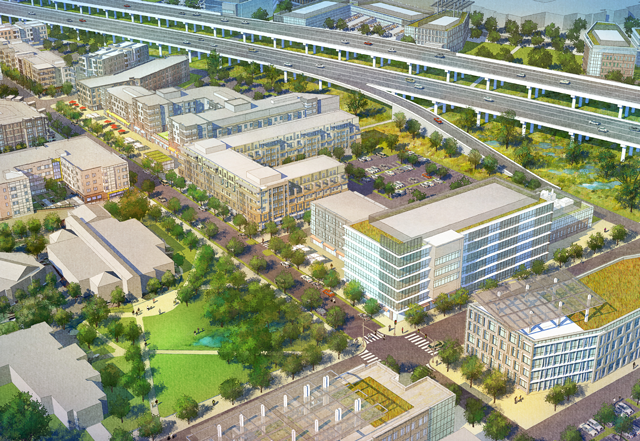In this month’s issue of Planning Magazine, Silvia Vargas and Nancy O’Neill discuss the importance of a comprehensive plan and the role it plays in the 21st century. Today’s comprehensive plans are more than high-level policy documents, often tackling issues at multiple scales simultaneously. Vargas and O’Neill break the conversation into four distinct topics: “Piecing the Puzzle Together,” “Momentum for Movement,” “Nexus to budgeting,” and “Platform for dialogue and building trust.”

In the first section, the duo speak to the importance of planning for growth and the role of the comprehensive plan to integrate separate efforts into a cohesive, interconnected frame-work of policies and actions. When planning for a city it is important to plan for the growth of the city as well as the surrounding areas; all the while asking, “how can we create better, more vibrant public spaces for people to enjoy downtown?” Local governments are also leveraging the planning process to identify interface points between the comprehensive plan and other ongoing planning efforts like mobility plans and parks and recreation master plans, to produce one cohesive vision for the city.
Next, Vargas and O’Neill delve into the phenomenon of citizens being interested in the cities in which they live. Citizens are more hands-on in the planning process and are, therefore, more invested in its outcomes. Partly due to the fact that municipal budgets are dwindling, the public has taken a greater interest in understanding how money is being spent, and in keeping local governments accountable for producing concrete results that align with the comprehensive plan. This, in turn, is leading to plans that are increasingly action – and project-oriented, as well as more performance-focused.
The next section addresses how comprehensive plans are helping communities do fiscal planning, driving the development of capital improvement plans and municipal budgets. Local governments use the comprehensive plan process to provide a vision for capital project plans and investments, in addition to utilizing plans to kick-start projects and engage community members as partners in implementation. The shrinking or stagnant fiscal budgets that many communities are facing, combined with increasing service costs, means that communities need those partnerships more than ever.
Finally, local governments are increasingly appreciating the usefulness of the planning process as a backdrop for open, honest conversations about difficult community issues. These dialogues help launch good relationships that can lead to more systematic consultations, which continue beyond plan adoption. Communities are also recognizing the need to involve broader audiences in the planning process to ensure equitable and full representation of the issues, as well as to strengthen the credibility of the process and get buy-in for adoption and implementation.
If you are a subscriber to Planning Magazine click here to read the full article.